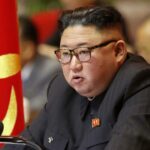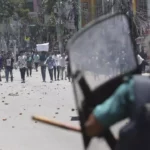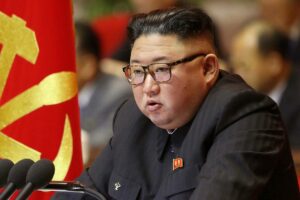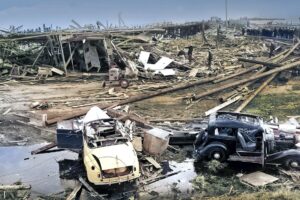The US military exercises in Guyana brought together about 15 nations from the Caribbean Community, known as CARICOM, as well as (France, Mexico, Canada and Great Britain).
Many of those military exercises took place in the jungle and along the Essequibo River, the same oil-rich area that Venezuela claims sovereignty over. We find here that the foundations of those plans, programmes, training and military maneuvers of Washington, along with others, focus on the fact that the United States of America has become in dire need of a new structure to reposition its forces globally, in line with the nature of the escalating threats on the part of China and Russia and their allies (Iran and North Korea), which are difficult to predict according to For the assessments of the US Central Military Command, which began to escalate during the post-Cold War phase, such as international terrorism, rogue states (or countries of the axis of evil), weapons of mass destruction, and others. Where the dispute revolves around the plan to adapt the US forces globally with its partners around the world, commensurate with the scenario of a possible confrontation with China. This plan is called the “Force Structure 2030”. Here, that plan, known as the “force structure” to confront China in 2020, was launched by the US Marine Corps Commander, General David H. Berger, and aims to prepare the US military and naval forces for a possible conflict with China in the Indo-Pacific region, instead of fighting wars against insurgents, as was the case during the wars of American forces in Iraq and Afghanistan.
Where it is expected that the new plan behind the Guyana military exercises between the American forces and their Western counterparts is to prepare for a possible war with China within the year 2030, and to train with Washington’s military allies in Europe and NATO members to fight the marines for several Sporadic military operations in chains of islands in the Indo-Pacific region close to China’s influence and its regional surroundings. Especially since these units will be smaller in number and more widely spread, so US military training is required for them with its allies, and training in particular on a variety of new weapon systems in the face of China and in support of Taiwan from the US military point of view.
The main factor that the US Marine Corps Command talks about during its formulation of the military training plan in Guyana, regarding confronting China and Russia, is a scenario of (fighting US military operations on large areas with its other allies, in which large forces are divided into smaller units that are widely spread with the guarantee of Having enough of a weapon to deliver powerful blows makes a real difference). This scenario is already being applied in the “Japanese Okinawa Islands near Taiwan”, where the Marine Corps stationed there will undergo changes according to the scenario of those current exercises that are taking place in Guyana.
The importance of the current Guyana exercises also lies in training on a number of new tactics, after the war in Ukraine highlighted the great importance of marches, missile artillery and the ability to hit the target from a long distance with great accuracy. These data have become a large part of the plan to develop the US Marine Corps. Especially since the previous US military plans failed to take into account that the battlefield would be the forests, plains and mountains of Ukraine, but the new Guyana exercises will focus on training to fight military battles and wars in the areas of the island chains that extend across vast areas of the Pacific Ocean, mainly adjacent to China. And the training in Guyana on all those logistical challenges that the US military operations command and its military partners may face, and the possibility of its deployment over a vast area to confront the growing Chinese expansion in separate areas in the Indo-Pacific region and around the world.
The training will take place in Guyana on how to globally control a number of US military sites spread around the world, as the field of work of the US Central Command forces in the burning areas around the world includes about 25 countries from Pakistan in the east to Morocco in the west, as well as, of course, the countries of Europe and the largest redeployment of US forces abroad since the end of World War II continues in full swing, of the estimated 350,000 American soldiers deployed in more than 130 countries around the world, more than 100,000 American soldiers operate from more than 150 military locations globally. There are reports about a discussion taking place within the European Command of the US Department of Defense, about the possibility of deploying US units in many European countries, within the framework of its perceptions of reorganizing its command structure to include a broad border and operational scope to Washington’s central command. Thus, despite what is being raised that the US administration has not yet taken, within the framework of plans to redeploy its forces around the world, specific decisions regarding the size of the forces that will move, and the areas from which they will be withdrawn or stationed in them, the general directions of the operation have become clear begun to be implemented practically.
The new US military directions, related to what is described as “the broadest redeployment of its forces abroad since the end of World War II” to confront the repercussions of mainly Chinese and Russian influence, as well as the nuclear threats to their ally North Korea, indicate the importance of strengthening Washington’s military alliances in the Western Hemisphere and the European continent. Mainly in the face of any possible Chinese cases or interventions, especially the establishment of potential military bases or the increased presence in European ports and attempts to militarize them in the future, just as those American military exercises with the countries of the Western hemisphere, as is the case in Guyana, are also likely to extend to the Middle East region, which is expected to occupy the position it previously occupied in Western Europe or East Asia during the Cold War era.
Here, we find that the map of the stationing or movement of the military units of the US Central Command spreads to more than 120 military bases and sites in more than 100 countries around the world, including the countries of the so-called American countries of the Near East in the Gulf and Horn of Africa regions. In addition to those military facilities granted to the American forces in the theater of operations of North African countries, as well as the intensive presence of large units of them in Central and South Asia around and inside Afghanistan. The scope of work of the leadership of those American forces includes the range of 25 countries located in the area extending from Pakistan in the east to Morocco in the west, and it is an area in which the American forces train with their counterparts in Western Europe, describing it as a “crescent of crises”.
The United States of America is one of the most powerful countries with military influence in the whole world, and we find that the current conditions of deployment of its forces is the result of specific developments in certain places around the world. We find that these temporary or limited “military facilities” represent the main form of the US military presence in many regions around the world, in addition to the presence of “major US military bases” in many European countries, such as Germany, Italy and Japan, or what was in the eastern region. The Middle East itself during the colonial era, such as the bases (Habbaniyah in Iraq, Aden in Yemen, and Howells in Libya).
The repercussions of the Russian-Ukrainian war, as well as the growing American concern about Chinese and Russian influence in different regions of the world, have led to a major shift in the form of the American military presence in the world at the present time, in two directions: represented in the expansion of the scope of military facilities and bases and the deployment of American forces around the world in Hundreds of bases, stations, ports, airports, camps, and centers for the vast majority of countries that have relations with the United States, which also included some countries that do not seem to have strong political relations due to their importance to Washington. These facilities, which the US military leadership is always trying to preserve, include: the right to use airspace, port visits, use of military airports, air transport operations, advanced deployment, fuel and maintenance services, and weapons storage, in addition to joint military maneuvers between US forces and their counterparts around the world. It is the case in Guyana with the countries of the Western Hemisphere and Europe.
The US forces are also seeking, through their joint exercises in Guyana, to pressure militarily to increase the number of major US military bases to include many regions around the world, especially Europe. The importance of these bases for the United States of America comes because they constitute semi-integrated main operations centers, enjoying great relative independence, and a general ability to support Washington’s air, land, or sea combat operations, whether through the actual stationing of elements of those forces there, or preparing the base for its deployment time of need for American forces.
Source : Modern Diplomacy















